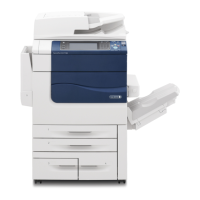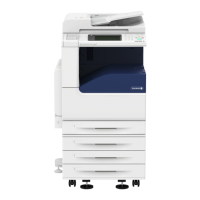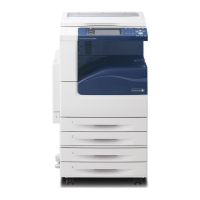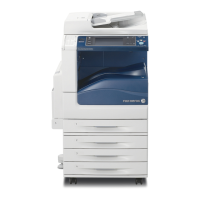Tools
252
Tools
5
4) Click the [Create New Certificate] button.
5) Select [Self-Signed Certificate] and then click the [Continue] button.
6) Set [Public Key Size] and [Issuer], and then click [Apply].
After a short while, [Settings have been changed.] is displayed.
3
Enable SSL/TLS communication.
1) Click [SSL/TLS Settings].
2) Select the [Enabled] check box for [HTTP - SSL/TLS Communication].
3) Select the [Enabled] check box for [Verify Remote Server Certificate].
4) Click [Apply].
5) When the right frame on the web browser will change to the machine reboot display,
click [Reboot Machine]. The machine reboots and the setting values are enabled.
4
Import the root certificate of the remote server.
1) Refresh the web browser to reload CentreWare Internet Services.
z
An address beginning with "https" instead of "http" is displayed in the address box in the web browser.
2) Click the [Properties] tab.
3) Click [Security] to display the items in the folder.
4) Click [Machine Digital Certificate Management].
5) Click [Upload Signed Certificate].
6) Enter a file name you want to import, or select a file to be imported from a dialog box
displayed by clicking the [Browse] button.
7) Click the [Import] button. After a short while, [Settings have been changed.] is displayed.
8) Refresh the web browser to reload CentreWare Internet Services.
5
Confirm that the certificate has been imported.
Otherwise, proceed to step 6.
1) Click [Certificate Management].
2) Select [Trusted Certificate Authorities] for [Category], and then click the [Display the list]
button.
3) Select the check box next to the certificate you want to confirm.
4) Click the [Certificate Details] button.
6
Configure connection settings for the remote server.
1) Click the [Properties] tab.
2) Click [General Setup] to display the items in the folder.
3) Click [Internet Services Settings].
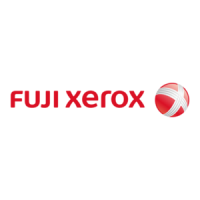
